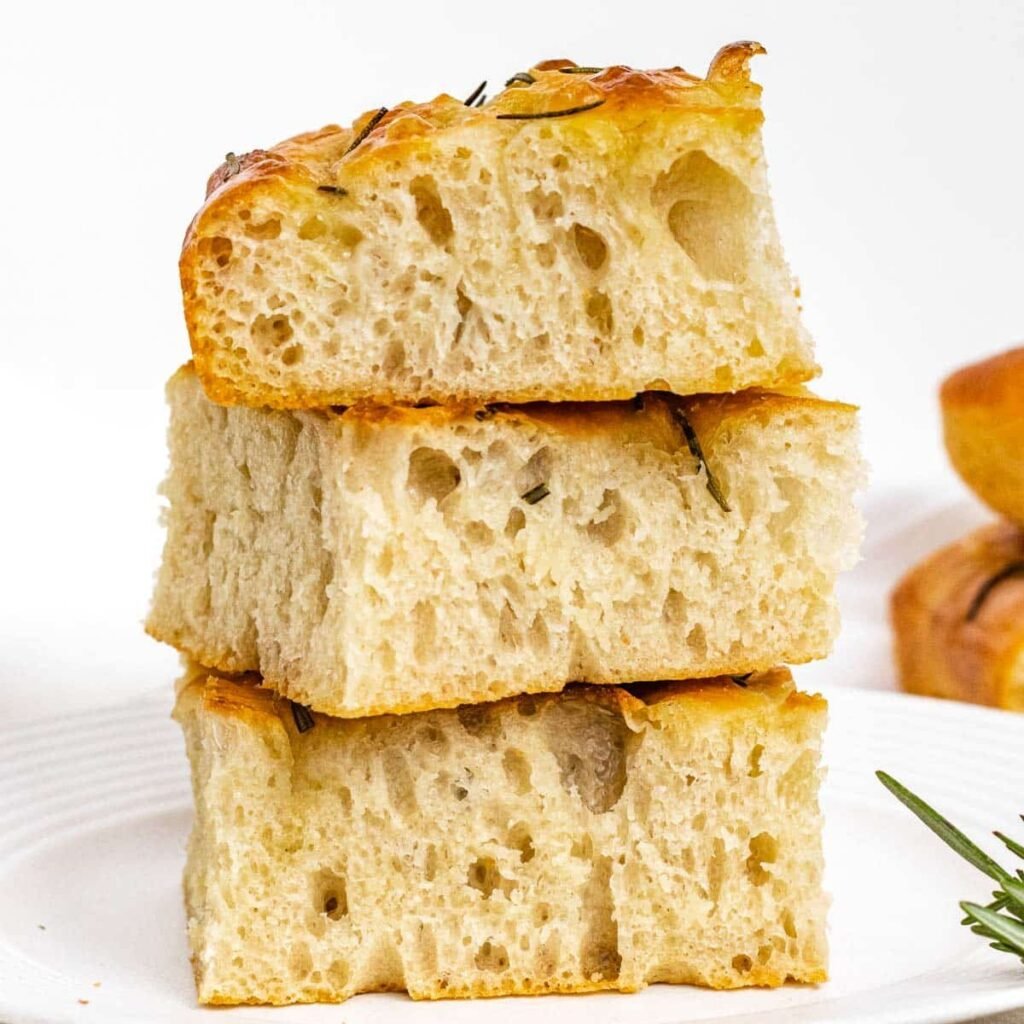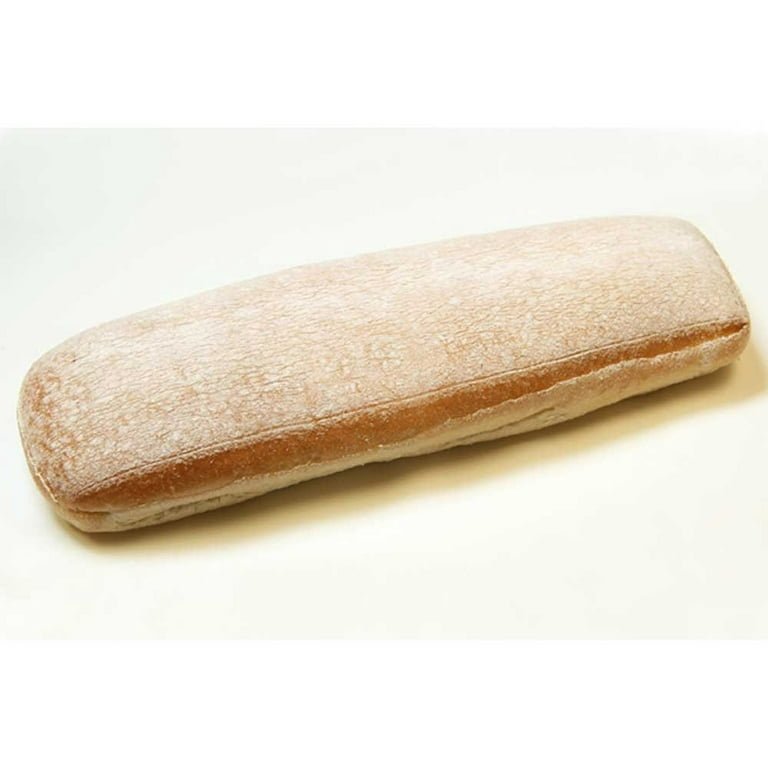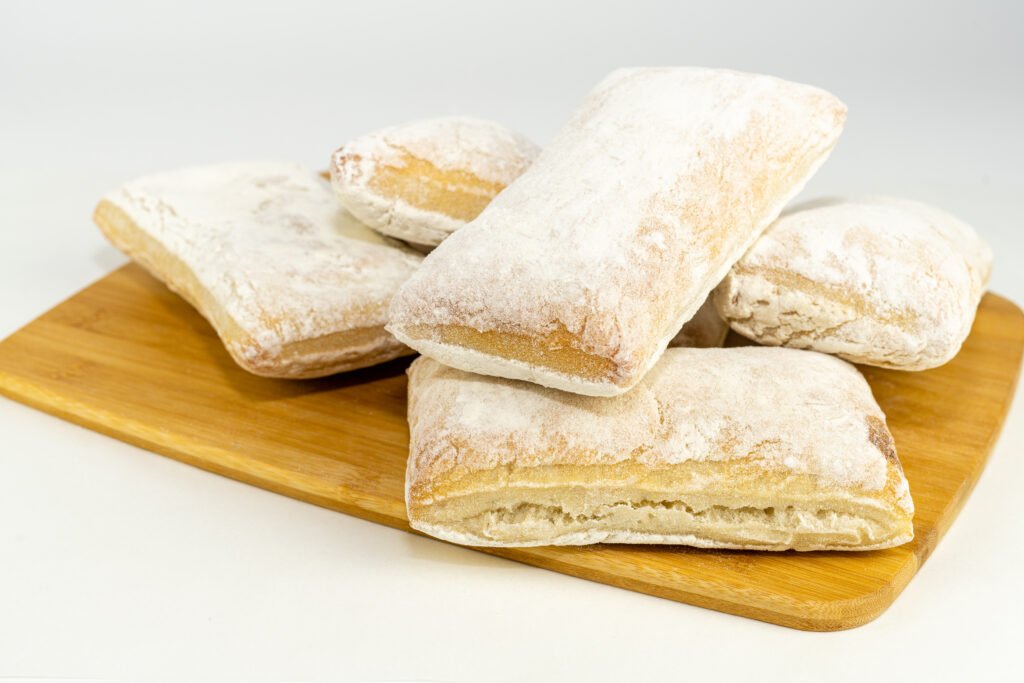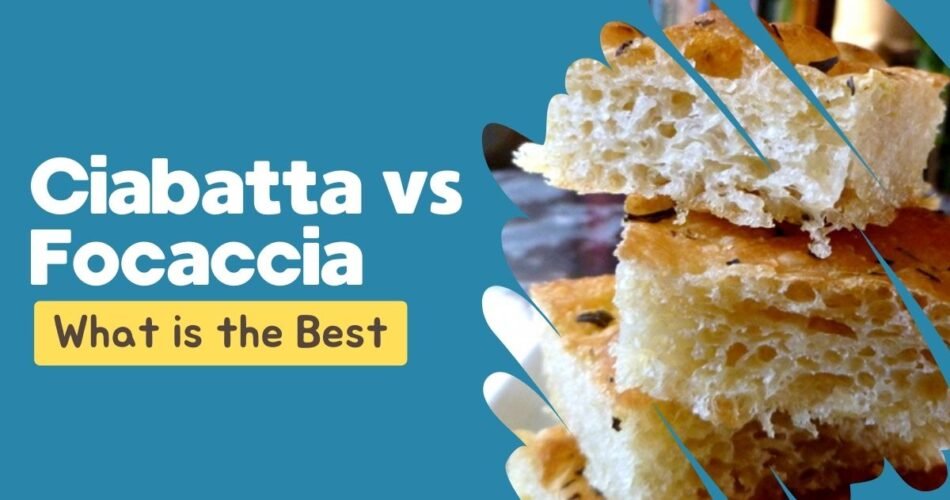Ciabatta vs focaccia is the quest I’ve embarked upon today. As a fervent lover of all things bread, I’ve found myself at the center of many culinary debates, but perhaps none so passionate as the dispute over which of these two Italian heavyweights reigns supreme. With their crispy crusts and soft, fluffy interiors, both ciabatta and focaccia have secured spots in the hearts of bread aficionados worldwide. But picking a favorite? That requires a dive into the flavorful world of these staple breads.
What is ciabatta?
In my bread baking journey, ciabatta was one of my first Italian loves. Originating from the Veneto region, ciabatta—which translates to “slipper” in Italian due to its flat, elongated shape—made its debut in the 1980s. It was created as a response to the ever-popular French baguettes. The main ingredients are straightforward: flour, water, yeast, and salt. However, the magic of ciabatta lies in its high hydration dough, which I’ve learned gives it that iconic porous crumb and chewy texture that’s hard to resist.
What is focaccia?
On the other side of this delectable debate, we have focaccia—a bread with ancient roots that trace back to Roman times. My first encounter with focaccia left me mesmerized by its unique olive oil-rich crust and the delightful, often herbaceous toppings that make it instantly recognizable. The core ingredients of focaccia bread include flour, oil, water, yeast, and salt, but it is the additional flavors such as rosemary, garlic, and sea salt that astonish my palate every time.
Ciabatta vs focaccia: What’s the Difference?
It’s time for me to dissect the differences between these two iconic breads, exploring their distinctive features that make them each worthy of a special place at the table.
Ingredients
Ciabatta and focaccia share some common ingredients, and their compositions is really close, like empanadas and pastelitos. Here’s my breakdown:
- Ciabatta: Wheat flour, water, yeast, salt.
- Focaccia: Wheat flour, water, yeast, salt, olive oil (and often herbs and other flavorings).
Taste
My taste buds confirm that ciabatta and focaccia offer unique gustatory experiences. Ciabatta, with its simple ingredient list, has a clean, wheaty taste that’s perfect for sopping up sauces, while focaccia, rich in olive oil, carries an inherently richer flavor profile, often accentuated by the additional herbs and toppings.
Price
As I’ve noticed on my market visits, ciabatta and focaccia can sometimes have varying price points. The price is often influenced by several factors, including ingredient quality and the artisanal effort that goes into crafting each loaf. However, I find that focaccia, with its added flavors and toppings, might be priced slightly higher than ciabatta in some bakeries and stores.
Appearance & Color
I am always struck by the aesthetic distinctions when placing ciabatta and focaccia side by side. Ciabatta possesses a rugged, flour-dusted crust with a pale cream interior, while focaccia typically presents a golden surface, often punctuated with fragrant herbs and glistening with olive oil—testaments to its rich, Mediterranean roots.
Nutritional Value
When comparing their nutritional value, there’s a lot to consider:
- Ciabatta: Generally lower in fat due to the absence of olive oil.
- Focaccia: Higher in fat and calories, primarily because of the olive oil and additional toppings.
Calorie Counts
I understand that for many of us, calorie count is a pertinent aspect of choosing our breads. On average:
- A slice of ciabatta contains approximately 250 calories.
- A similar serving size of focaccia can be around 300 calories, due to the additional olive oil and toppings.
Regional Origins
It’s quite fascinating to consider the geographical roots of these breads. While ciabatta hails from the northern regions of Italy, focaccia is most associated with the Liguria region, in the northwest. Having tried focaccias right from their homeland, I can attest that the regional versions have subtle differences that reflect their terroir, just as wines do.

Ciabatta vs focaccia: What are the similarities?
Despite their differences, ciabatta and focaccia do share some common ground:
- Both are Italian in origin.
- Both are made from wheat flour, water, yeast, and salt.
- Both require a skilled hand to create their distinct textures.
Ciabatta vs focaccia: What is the best?
At the end of the day, choosing between ciabatta and focaccia comes down to personal preference and context. For me, after much thought and many tastings, I must lean towards ciabatta. Its versatility and perfect balance of chewiness make it sublime for a range of dishes—from bruschetta to panini. However, that’s not to say that focaccia doesn’t have a special place on my table; its rich flavor is unrivaled for a simple yet elegant appetizer.
Popular culinary uses of ciabatta and focaccia
Let me share some culinary delights that incorporate ciabatta:
- Panini: Grilled to crispy perfection.
- Caprese Sandwich: Freshly sliced tomato, mozzarella, and basil.
- Garlic Bread: Toasting ciabatta with garlic butter.
In terms of focaccia, here are a few of my favorites:
- Flatbread Pizza: Topped with mozzarella, tomato, and basil.
- Focaccia Sandwich: Split and filled with deli meats and cheeses.
- Dipping Bread: Simply served with balsamic vinegar and olive oil.

Where to buy ciabatta and focaccia
My pursuit for the finest loaves has taken me to several places. Ciabatta can often be found at local bakeries, artisan bread stores, and well-stocked supermarkets. Its popularity means it’s widely available and easy to find for my sandwich cravings.
When it comes to focaccia, I typically look for specialty stores or Italian delis. However, it’s also become more accessible in supermarkets, especially in the bakery section. For the full experience, I recommend trying focaccia from a bakery that specializes in Italian bread, as their version is likely to be most authentic.
How to store ciabatta and focaccia
To preserve the wonderful texture of ciabatta, I usually keep it in a paper bag at room temperature, which helps maintain its crusty exterior for about a day. If I need it to last longer, I wrap it in foil and freeze it, though I make sure to consume it within a month for the best quality.
Focaccia, on the other hand, owing to its higher olive oil content, keeps a bit better. I wrap it in plastic wrap or place it in an airtight container and store it at room temperature for a couple of days. Just like ciabatta, it can also be frozen if needed.

Recipe: Easy Focaccia-Ciabatta Grilled Cheese
Here’s a simple recipe that brings together the best of both worlds:
- Ingredients: Sliced ciabatta loaf, fresh mozzarella, focaccia bread (for comparison), butter, and an optional pinch of garlic powder.
- Preheat your pan on medium heat.
- Butter the outside of each bread slice. If desired, lightly dust with garlic powder for extra flavor.
- Layer the mozzarella between the bread.
- Cook on the pan until golden brown on both sides and the cheese has melted beautifully.
Final Words
In conclusion, the battle of ciabatta vs focaccia is a tough one, and while I lean towards ciabatta for its versatility and chewy delight, the rich and flavorful focaccia brings a unique set of attributes to the table. Whichever side you’re on, it’s clear that both breads have earned their right to be celebrated. Ciabatta vs focaccia: whichever you choose, you’re in for a real treat.

